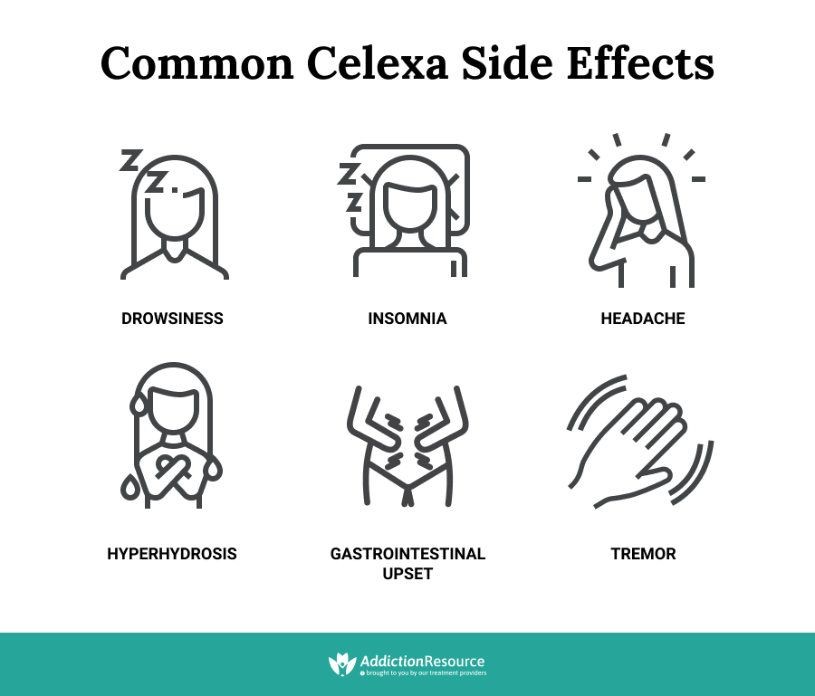
Contents
- 1 Celexa vs. Cymbalta: Comparing Side Effects and Effectiveness
- 1.0.1 Uses of Celexa vs. Cymbalta
- 1.0.2 Side Effects of Celexa vs. Cymbalta
- 1.0.3 Withdrawal Symptoms of Celexa vs. Cymbalta
- 1.0.4 What is the dosage of Celexa vs. Cymbalta?
- 1.0.5 Drug Interactions with Celexa vs. Cymbalta
- 1.0.6 Safety of Celexa vs. Cymbalta during Pregnancy and Breastfeeding
- 1.0.7 Summary
Celexa vs. Cymbalta: Comparing Side Effects and Effectiveness
Celexa and Cymbalta are antidepressant medications used to treat depression. Celexa is in the class of medications known as selective serotonin reuptake inhibitors (SSRIs), while Cymbalta is a selective serotonin and norepinephrine reuptake inhibitor (SSNRI).
Celexa works by preventing the reuptake of serotonin in the brain, allowing for more free serotonin to stimulate nerve cells. In addition to depression, Celexa is also used off-label to treat alcoholism, binge-eating disorder, generalized anxiety disorder, panic disorder, hot flashes, and obsessive-compulsive disorder (OCD).
Cymbalta works by preventing the reuptake of both serotonin and norepinephrine in the brain. It is used to treat major depressive disorder, generalized anxiety disorder, diabetic peripheral neuropathic pain, fibromyalgia, and chronic musculoskeletal pain.
Uses of Celexa vs. Cymbalta
Celexa:
Celexa is approved for the treatment of depression. It is also used off-label for the following:
- Alcoholism
- Binge-eating disorder
- Generalized anxiety disorder (GAD)
- Panic disorder
- Hot flashes
- Obsessive-compulsive disorder (OCD)
Cymbalta:
Cymbalta is used for the treatment of:
- Depression
- Generalized anxiety disorder
- Nerve pain associated with diabetic peripheral neuropathy, fibromyalgia, and chronic musculoskeletal pain
Side Effects of Celexa vs. Cymbalta
Celexa:
The most common side effects of Celexa include:
Between 1 in 6 and 1 in 5 people experience side effects. Celexa is also associated with sexual dysfunction.
Antidepressants, including Celexa, may increase the risk of suicidal thinking and behavior in children and adolescents. Close observation is necessary when starting therapy.
Cymbalta:
The most common side effects of Cymbalta include:
Increased blood pressure and sexual dysfunction are also associated with Cymbalta.
Antidepressants, including Cymbalta, may increase the risk of suicidal thinking and behavior in children and adolescents. Close observation is necessary when starting therapy.
Withdrawal Symptoms of Celexa vs. Cymbalta
Celexa:
Withdrawal symptoms of Celexa may include:
- Dizziness
- Tingling sensations
- Tiredness
- Vivid dreams
- Irritability or poor mood
Cymbalta:
Withdrawal symptoms of Cymbalta may include:
- Dizziness
- Anxiety
- Nausea
- Vomiting
- Nervousness
- Diarrhea
- Irritability
- Insomnia
It is important to gradually reduce the dose of both Celexa and Cymbalta when discontinuing therapy to prevent withdrawal symptoms.
QUESTION
What is the dosage of Celexa vs. Cymbalta?
Celexa:
- The usual starting dose is 20 mg once daily. The dose may be increased to 40 mg daily after one week.
- A dose of 60 mg has not been shown to be more effective than 40 mg.
- Treatment may take several weeks to show maximum effects, and doses are often adjusted upwards gradually.
Cymbalta:
The recommended doses for Cymbalta are:
- Depression: 20 or 30 mg twice daily or 60 mg once daily. Starting with 30 mg once daily for one week before increasing to 60 mg daily may help with adjustment.
- Anxiety disorder, pain associated with diabetic neuropathy, fibromyalgia, or chronic musculoskeletal pain: 60 mg daily. There is no additional benefit at doses greater than 60 mg/day.
- The maximum dose for depression or anxiety disorder is 120 mg/day.
Drug Interactions with Celexa vs. Cymbalta
Celexa:
- Celexa should not be taken with MAO inhibitors or tryptophan, as it may cause serious reactions. Combining Celexa with certain drugs may increase the likelihood of bleeding.
Cymbalta:
- Cymbalta should not be used with MAO inhibitors or within 14 days of discontinuing an MAOI. Combining Cymbalta with certain drugs that affect serotonin or increase bleeding risk may lead to serious reactions.
- Some drugs may increase blood levels of Cymbalta, potentially increasing adverse effects. Combining Cymbalta with drugs that raise the pH in the gastrointestinal system or slow gastric emptying may affect its absorption.
- Cymbalta may reduce the breakdown of desipramine, leading to increased blood concentrations and potential side effects.
Safety of Celexa vs. Cymbalta during Pregnancy and Breastfeeding
Celexa:
- Exposure to citalopram in the third trimester may cause complications. Citalopram is excreted in breast milk and may cause adverse effects in infants.
Cymbalta:
- Since the safety of duloxetine in infants is unknown, breastfeeding is not recommended while taking Cymbalta.
Summary
Celexa and Cymbalta are antidepressants used to treat depression. Celexa is an SSRI, while Cymbalta is an SNRI. Celexa is approved for depression, while Cymbalta is approved for depression, generalized anxiety disorder, and various types of pain. Both medications have black box warnings for increased suicidal thoughts and behavior in children, adolescents, and young adults. Common side effects and withdrawal symptoms may occur with both medications. It is important to follow proper dosing and be aware of potential drug interactions and safety considerations.


